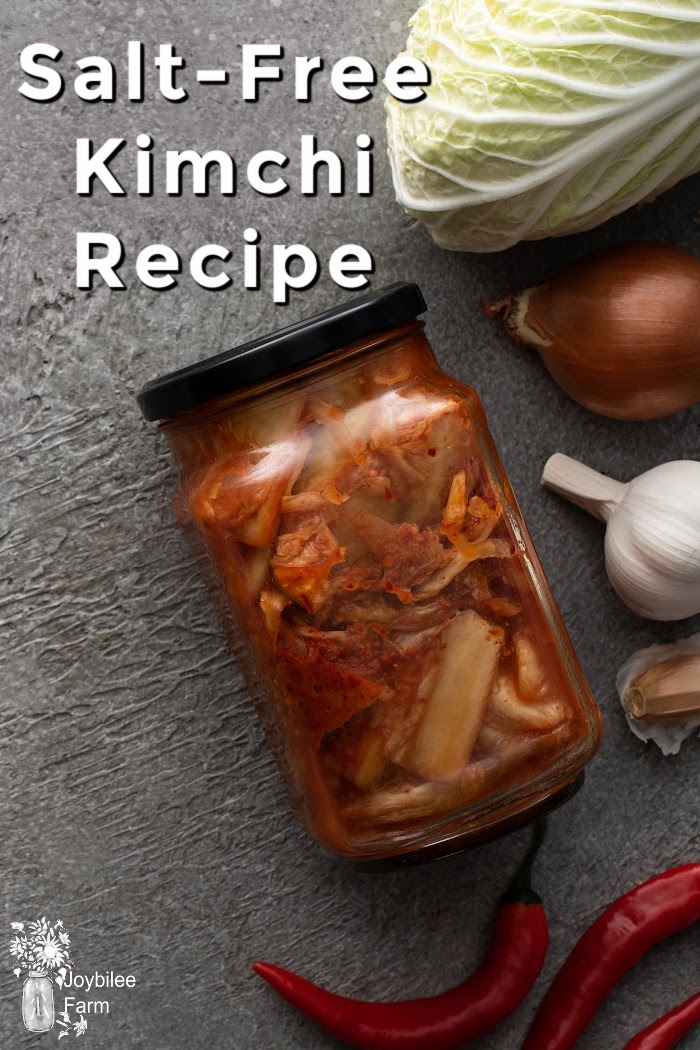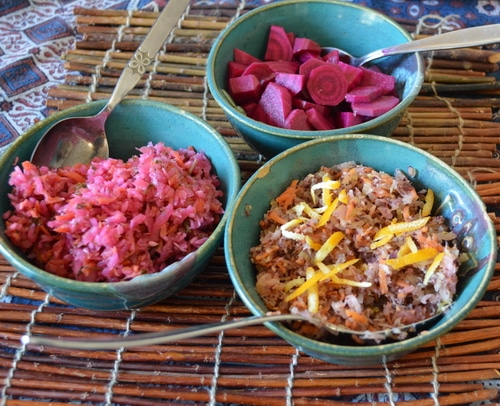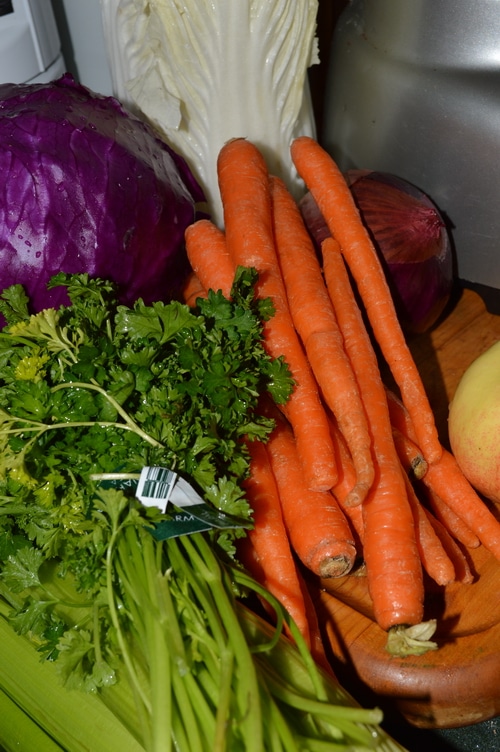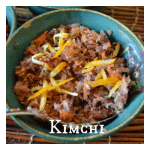Eat your Kimchi Salt-Free
Kimchi is a sour, spicy, Korean fermented vegetable dish full of healthy probiotics. Now you can eat your kimchi salt-free with this healthy kimchi recipe.

Kimchi is a traditional Korean fermented vegetable dish that is spicy and delicious. It is traditionally made with salt, like this easy recipe from Attainable Sustainable. Perfect to serve over noodles or in soup. Use it as a side dish, a relish, or a salad. It’s versatile and healthy.
Kimchi is also laden with salt. Salt is necessary to inhibit bad microbes in the initial fermentation before the lacto-bacteria has had a chance to lower the acidity of the vegetables. But is salt really necessary to fermented vegetables? Can those on a low-salt diet still enjoy the probiotic benefit of Kimchi? Yes. Yes and Yes.
For an explanation on adapting your own favourite fermented vegetables recipes to a low-sodium diet see this well-researched post.
Eat your Kimchi salt-free
You can now eat your kimchi without salt with this delicious Kimchi recipe that is easy to make and ready in less than a week.

Start with fresh, unblemished vegetables like these:


Eat Your Kimchi without salt
- Prep Time: 30
- Total Time: 30 minutes
- Yield: 4 1x
Description
A spicy, sour, lemony fresh adaptation to traditional Korean Kimchi, made without additional salt
Ingredients
- 1 small head of suey choy (Japanese Cabbage)
- 1 red onion, peeled
- 5 garlic cloves, minced
- 5 stalks of celery
- 5 carrots, peeled
- 2 inch piece of raw ginger, peeled
- 2 hot peppers, seeded, (optional)
- 4 inch piece of daikon radish, peeled
- 2 Granny Smith apples, cored and peeled
- 1 bunch of parsley, finely chopped
- ½ cup dulse
- ½ cup juice from a successful batch of fermented vegetables
Instructions
- Wash all fruit and vegetables.
- Using a food processor, with a coarse grater blade, coarsely grate suey choy, onion, celery, carrots, ginger, garlic, peppers, radish, and apples. Place in a 2 quart bowl.
- Add parsley, dulse, and fermented vegetable juice to the grated vegetables and mix well.
- Place fermented vegetables in a sanitized wide mouth jar. Press down with a kraut pounder to remove any air pockets and ensure a solid pack. Wait for 1 hour so that juice from the vegetables rises to the top of the jar.
- Place a single cabbage leaf over the contents of the jar, pushing it down under the liquid in the jar. This protects the fermenting vegetables from exposure to the air, which can cause mold. A glass weight or other heavy object can be used to keep the cabbage leaf below the surface of the brine.
- Secure the jar lid with a vapour lock to inhibit contamination.
- Allow to ferment for 5 to 7 days, or until active fermentation ceases.
- Allow the fermented vegetables to ferment at room temperature for a week. Once all active bubbling has stopped the jar may be refrigerated.
- Replace the vapour lock lid with a normal wide-mouth lid. Refrigerate.
Notes
- It may take a week or more for the flavours to meld and be to your liking. Serve when it tastes how you like it.
Nutrition
- Calories: 1328
- Sugar: 156
- Sodium: 1578
- Fat: 8
- Saturated Fat: 2
- Unsaturated Fat: 4
- Trans Fat: 0
- Carbohydrates: 307
- Protein: 42
- Cholesterol: 0

Check out these recipes for fermented vegetables:
No-salt Kimchi



I had given up the hope of ever tasting kimchi again when I was diagnosed with congestive heart failure. Now, I have some hope again, though I need some knowledge to go with it. 1. Your recipe says 1/2 cup of dulse and all the sites I’ve found sell it by the ounce. How many ounces is 1/2 a cup? 2. Since this is my first time making (versus buying) kimchi, I don’t have any juice from fermented vegetables. Where can I get some? 3. Lastly, in your nutrition list, you say that this has “Calories: 1328, Sugar: 156, and Sodium: 1578.” Is that per serving?? 1578 mg of sodium is nearly my entire day’s worth of sodium (2000), the sugar is too high to even consider and the calories exceed a daily 1200 calorie diet. Please “say it ain’t so.” I’m looking forward to your response, since I’m really hoping I’ll be able to add kimchi back into my life. Thanks,
Susan
I have a recipe with one tablespoon of salt per 1 litre jar that turned out well. I consider that a very low sodium content